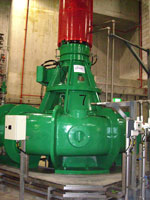
Sustainability
Welcome to Environmental Protection’s Quiet Waters blog.
"Only in quiet waters do things mirror themselves undistorted. Only in a quiet mind is adequate perception of the world.” – Hans Margolius
Sustainability is a growing concept. I have asked Lee Ferrell to comment on this topic and its application to water and wastewater. Lee Ferrell is Schneider Electrics’ Water and Wastewater Energy and Process consultant. He has a bachelor’s degree in electrical engineering and a master's in environmental science, both from Clemson University. He is a Board-certified Environmental Engineer and a Professional Engineer. The following are his thoughts.
Sustainability is most likely the word of the next decade. However, what is sustainability? The most widely accepted definition is “meeting the needs of the present without compromising the ability of future generations to meet their own needs."
The obvious question is “How is sustainability applicable to water and wastewater treatment facilities?”
I like to say it is a puzzle with four pieces balanced to include operational, water, energy, and carbon efficiency solutions. Water and wastewater treatment facilities are able to reduce operation and maintenance costs with it; and because the production of energy is directly related to greenhouse gas (GHG) production, energy reduction is directly related to carbon reduction and dollars saved.
Water and wastewater facilities need a substantial amount of electrical energy to conduct unit processes and operations. This usage equates to 56 billion kilowatt hours (kWh), $4 billion, and 45 million tons of GHG production. Thus, it is evident that significant savings in energy is a key to a sustainability solution.
Pumping is the largest consumer of energy for a water treatment facility — representing more than 87 percent of the total energy consumed. The most opportunistic energy savings for wastewater treatment plants are primarily found in aeration and pumping applications. This includes aeration for activated sludge and aerobic digestion as well as return and waste activated sludge pumping representing more than 70 percent of the energy consumed.
Energy and water are finite resources due to aging infrastructure, increased demand, more stringent legislation, limited resources; slow technological advances and, finally, a low interest in renewable or reuse of energy and water resources. That makes energy and water management the easiest and fastest way to achieve sustainability solutions in a facility. What are your thoughts?
Posted by Grant Van Hemert, P.E., Schneider Electric Water Wastewater Competency Center on Feb 01, 2010